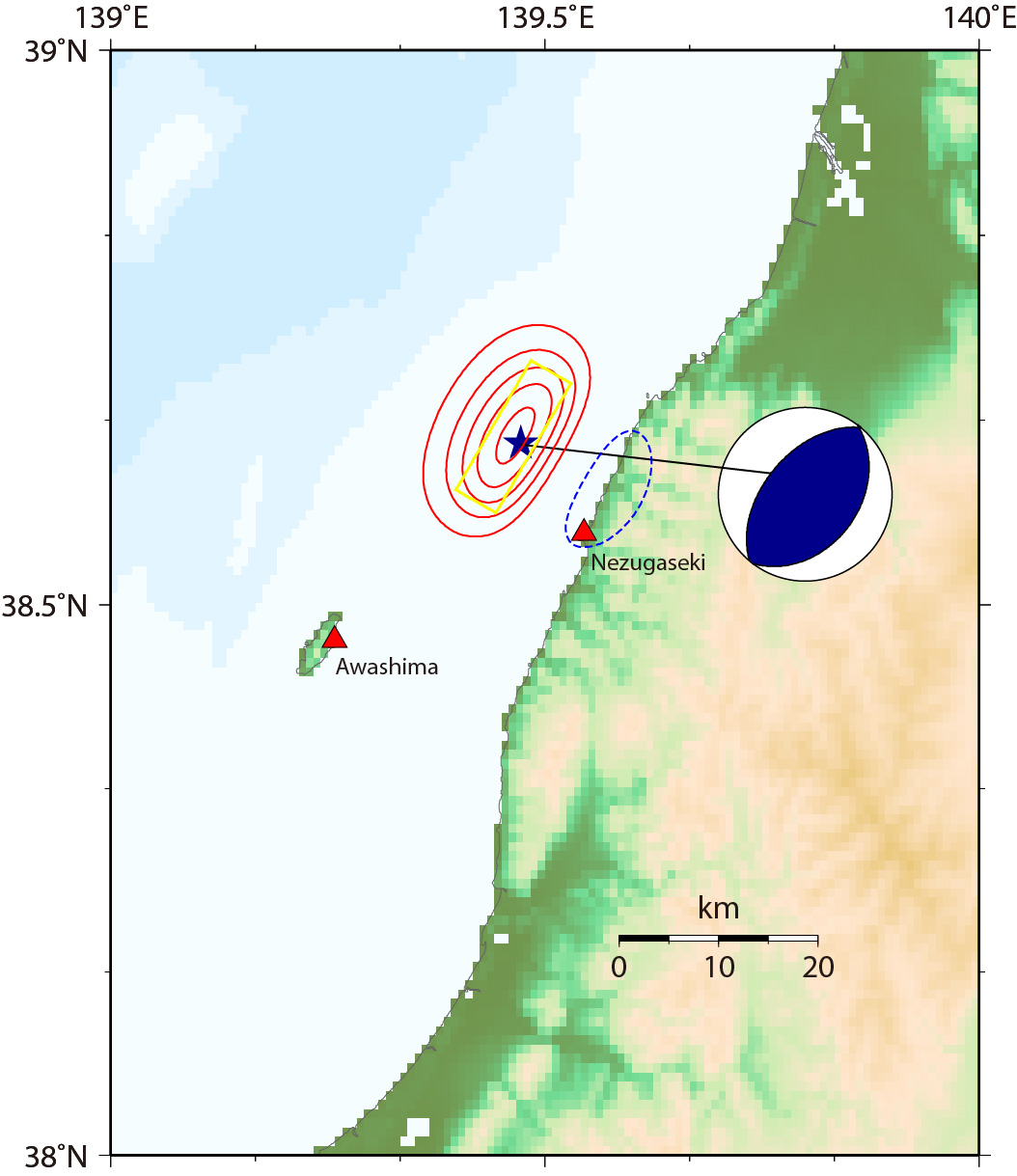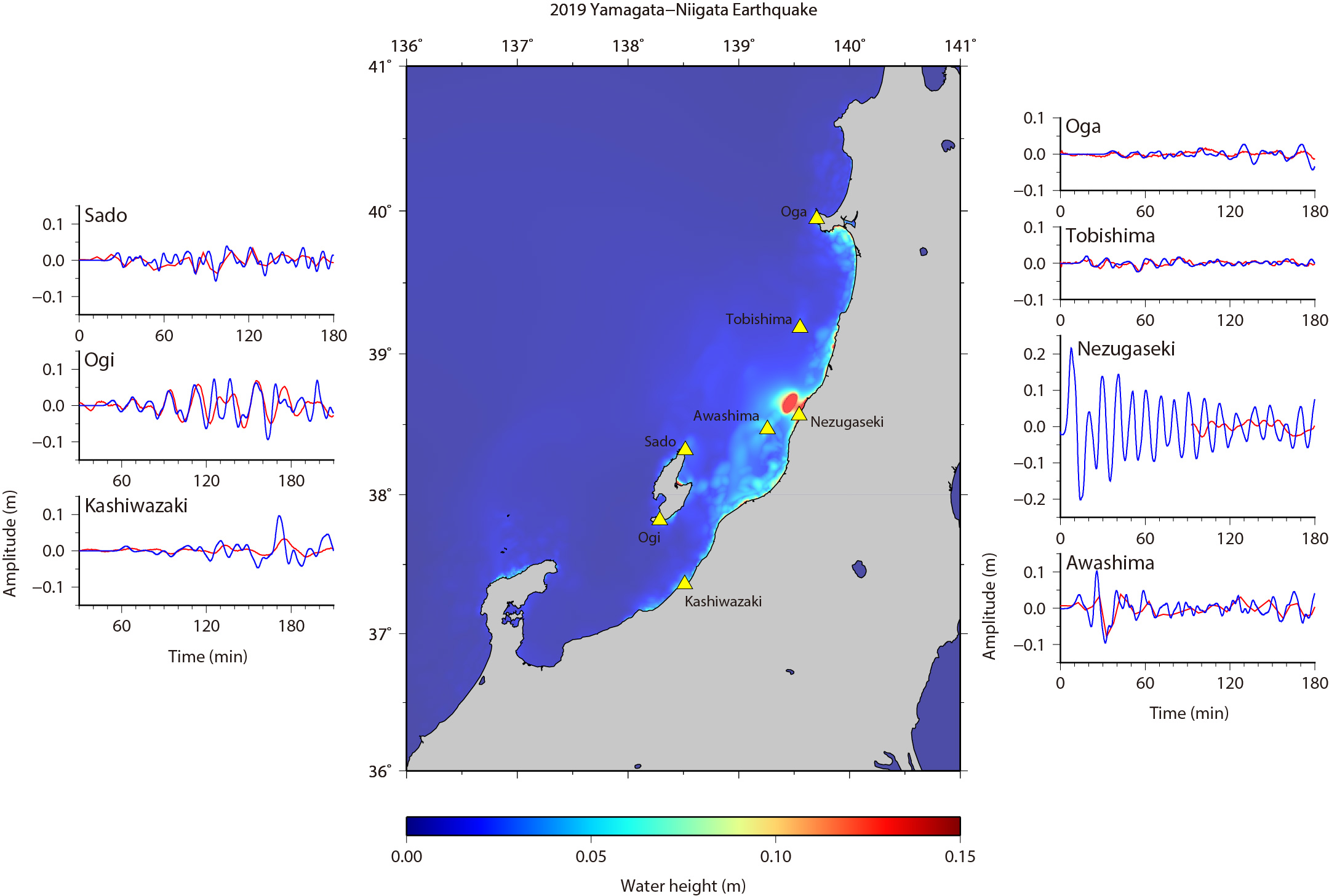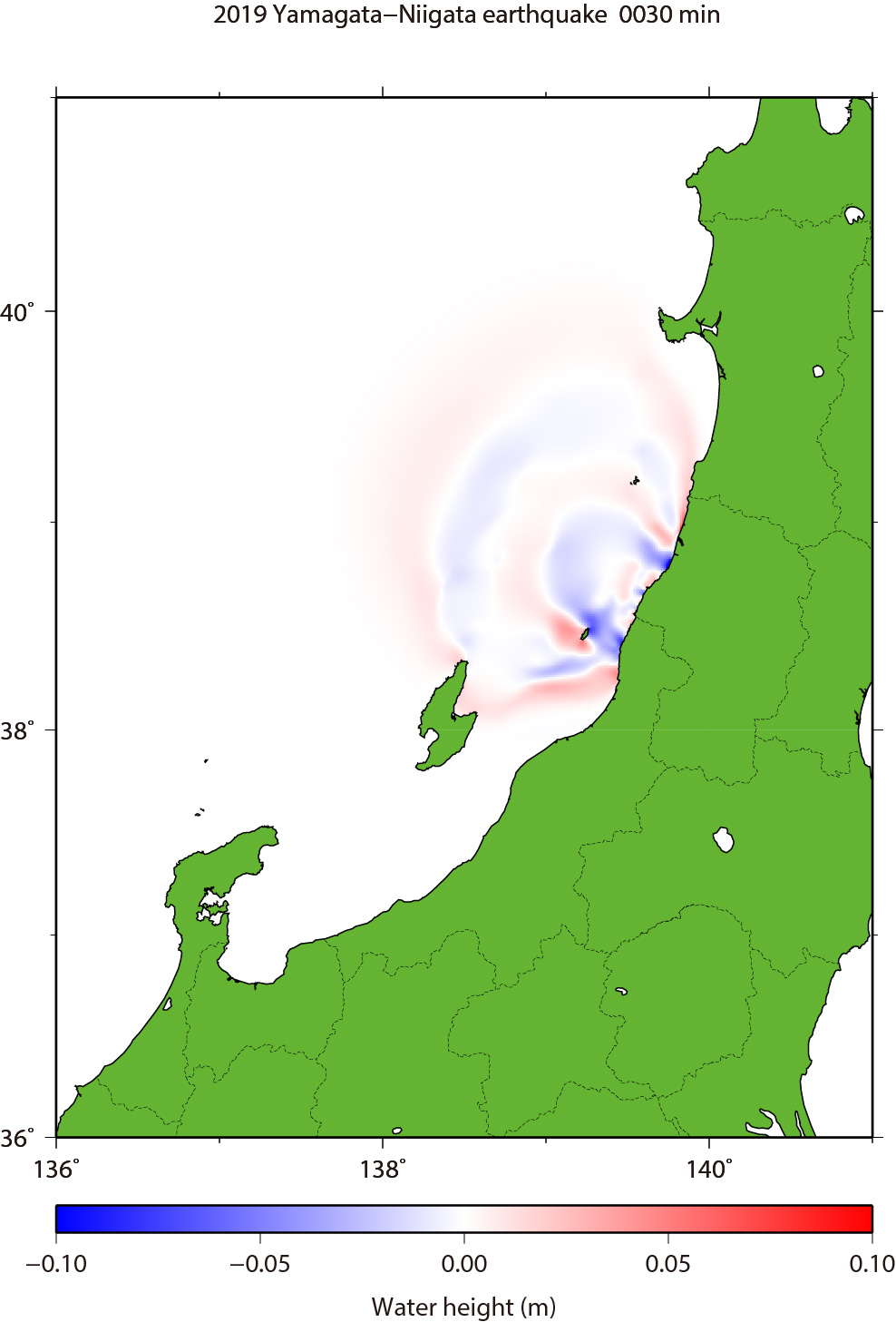| Yamagata-Niigata Tsunami on June 18, 2019 |
We simulated the tsunami generated from the Yamagata-Niigata Japan earthquake (38.646°N, 139.472°E, depth=12.0km, M=6.4 at 13:22:19 UTC according to
USGS) on June 18, 2019 (Fig. 1).
The fault length and width were set to 15 km × 7.5 km. The focal mechanism is strike:210º, dip:52º, slip:92º from the USGS's W-phase moment tensor solution. The top depth of the fault was assumed to 5 km. An average slip on fault is 1 m. The seismic moment is 5.6 x 10**18 Nm (Mw = 6.4) assuming the regidity of 5 x 10**10 N/m**2.
As the initial condition of tsunami, static deformation of the seafloor was calculated for a rectangular fault model [Okada, 1985] using the source model (Fig. 1).
For the tide gauges along the coast, we used the bathymetry data of
J-EGG500 with 12 arc-second grid interval.
To calculate tsunami propagation, the linear shallow-water, or long-wave, equations were numerically solved by using a finite-difference method [Satake, 1995].
The maximum heights of simulated tsunami are shown with the calculated tsunami waveforms at coastal tide gauges in Fig. 2.
We downloaded the tide gauge data
from
JCG's and
GSI's web sites and compared the observed tsunami waveforms and simulated ones.
We can see the tsunami propagation in the animation (Fig. 3).

Fig.1 Tsunami source model of Case 1.
The red contours indicate uplift with the contour interval of 0.05 m., while the blue contours indicate subsidence with the contour interval of 0.02 m.
Blue star shows the mainshock determined by USGS. USGS's W-phase moment tensor solution and locations of tide gauges are also shown.

Fig.2 Distribution of maximum height of the simulated tsunami and comparison of tsunami waveforms
Solid lines in red indicates the observed tsunami waveforms. The blue lines are synthtic tsunami waveforms.

Fig.3 Tsunami Propagation (Click to start animation)
The red color means that the water surface is higher than normal sea level, while the blue means lower.
| by Yushiro Fujii (IISEE, BRI) and Kenji Satake (ERI, Univ. Tokyo) |
|
|
| References |
|
Okada, Y. (1985), Surface Deformation Due to Shear and Tensile Faults in a Half-Space, Bull. Seismol. Soc. Am., 75, 1135-1154. Satake, K. (1995), Linear and Nonlinear Computations of the 1992 Nicaragua Earthquake Tsunami, Pure and Appl. Geophys., 144, 455-470. |
Last Updated on 2019/6/19